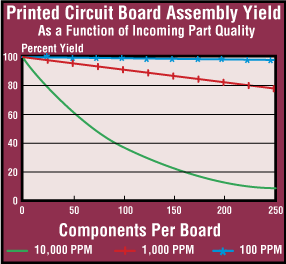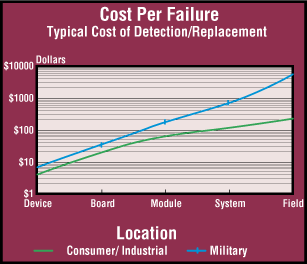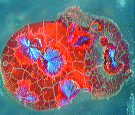
- +1 (714) 578-6100
Hours Mon - Fri, 07:00 AM - 06:00 PM (Pacific Time)
As critical components become smaller and more sophisticated, their susceptibility to moisture damage increases.
Once absorbed by sensitive components, water creates a number of potentially disastrous conditions. Even minute traces of oxidation, the most notorious result of moisture exposure, can degrade soldering and other manufacturing processes. Because water dissolves ionic contaminants, it also alters the conductivity of the material, which in turn can degrade electrical function. Water also combines with other materials, causing harmful chemical reactions that degrade pharmaceutical samples and chemical mixtures.
One particularly costly example of moisture-related damage is the "popcorn" effect that occurs during reflow soldering of IC packages.
Although the vast majority of integrated circuits are packaged in plastic encapsulants (because they are cheaper than ceramic ones), manufacturers are often unaware of the consequences of using hygroscopic materials in a solder reflow process. Moisture absorbed into the package vaporizes during the rapid heating and generates pressure along the metal-to-plastic contact regions. Differences between the coefficients of thermal expansion of the two materials can cause loss of adhesion, swelling, and cracking. An audible "pop" signals the problem, and testing confirms a deterioration of electrical function.
Because moisture absorption, and with it the likelihood of part failure, is directly related to the duration of exposure, dry storage is an obvious solution to this problem.


ICs, for example, that have absorbed substantial amounts of water may not show signs of degradation until late in the manufacturing process. These "walking wounded" parts may not fail until they have been shipped to a customer or been installed in increasingly more complex and expensive assemblies.
This deferred "dwell effect" of moisture exposure is perhaps the most economically compelling reason to provide a clean, dry storage environment at every stage of your manufacturing process.
Moisture-related damage is also common in package bonding. If the integrated circuit packages have been in inventory for more than six months but inadequately protected against moisture, leads will oxidize, solder joints will fail, and board yields will drop.
One common method of dealing with moisture contamination is to remove it prior to each manufacturing step.
Although vacuum processing and bake-and-bag methods of IC drying accomplish this end, these operations slow down production, particularly if they must be repeated several times in the course of circuit manufacturing. Further, these baking and sealing processes themselves expose parts to thermal extremes that can cause damage.
Desiccant-based dry storage avoids some of these drawbacks, but introduces others. These systems remove moisture from an incoming supply line of air (or other process gas) and often feature dual-tower designs that perform on-line drying and off-line regeneration simultaneously for continuous operation. Such systems can be effective, but they require heating/drying components that may not be reliable. Further, they must be closely monitored to ensure that incoming gas flow remains below a critical humidity threshold. Their complexity and high operating costs makes them prohibitively expensive for long-term storage applications.
As an alternative to desiccant dryers, nitrogen-purged desiccator systems maintain dry conditions relatively cheaply and conveniently.
Terra manufactures desiccators specially configured for ICs, tote boxes, IC carrier reels, and other common microelectronics and electronics parts. Not only does desiccator storage eliminate damage that can be immediately detected, but it also prevents “dwell effect” – the more costly damage that doesn’t emerge until ICs or other components are installed in more complex assemblies, such as medical devices, that are more difficult to repair or replace.
 Chemical Samples
Chemical Samples
Desiccators provide an inert gas environment for storing volatile chemicals. They can also be used for slow, controlled drying, and are available with customized heating capabilities. Use of a nitrogen or other inert process gas eliminates reactions caused by oxygen exposure.
 Biological Samples
Biological Samples
The dry, inert environment inside a desiccator is ideal for storage of forensic materials, DNA samples, and biological cultures. Easy-clean BioSafe® stainless steel desiccator cabinets are ideal for use with materials that require a sterile environment.
 Pharmaceuticals
Pharmaceuticals
Dry storage inhibits growth of organic contaminants and retards other chemical reactions that degrade pharmaceuticals.
 Many More!
Many More!
Clean, dry storage environments for everything from archival records to archeological samples—call to discuss your application!
Terra desiccators also provide complete protection against particles and static charges, making them the ideal environment for your delicate parts.
Terra Universal is the leading expert in the design and fabrication of ISO rated cleanrooms, furnishing and supplies.
Call (714) 459-0731
